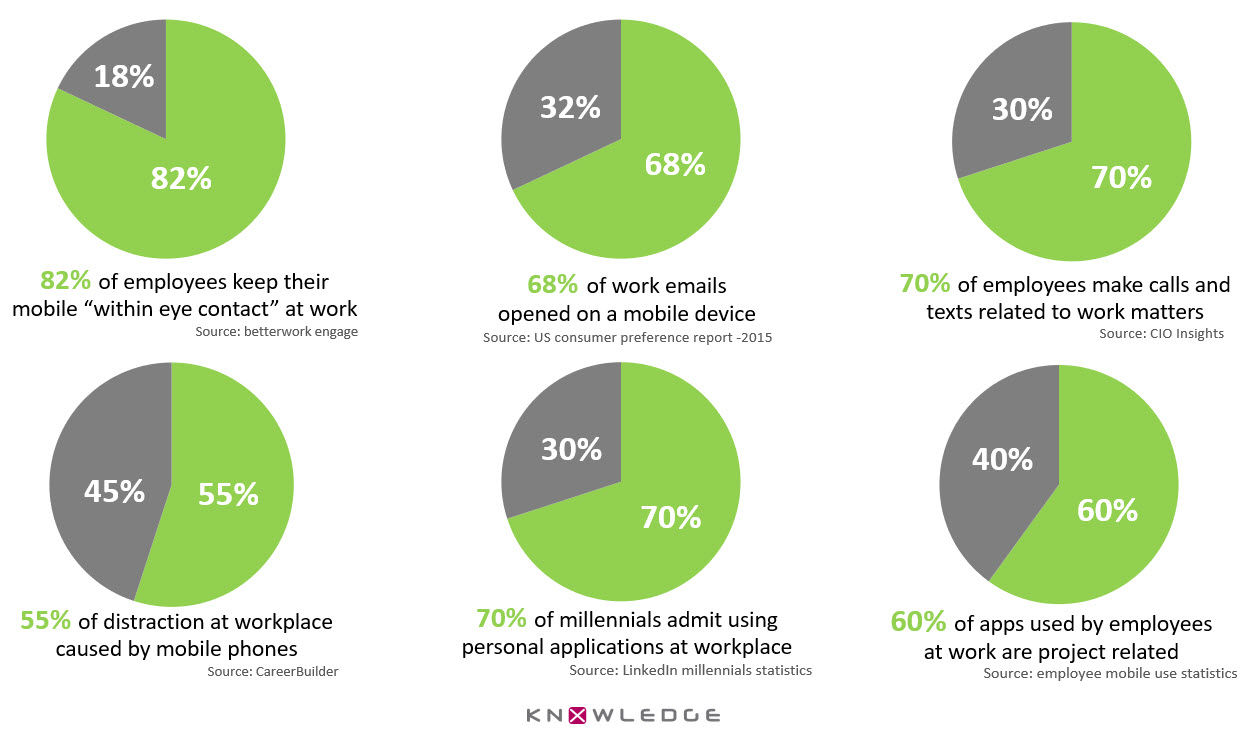Recently, a marketing firm forced its employees to hand out their smartphones during working hours, and only allowed them to get them back during lunchtime and after work. Is this a smart move !! is it even legal to do so.
Before you get drifted into deciding if it is a fair move or not, let’s first put some facts and implications of applying this rule on the table in front of us;
Figure 1: smartphones usage statistics

Performance – employer pays salary to employees expecting them to give undivided attention to the work they perform. If the employer believes that making this happen will only be achieved by smartphones being off or put away, they are entitled to make such a request.
Employees though should be treated as adults. If an employer adopts an “Adult – Child” approach with his employees, the employer needs to be ready and expect to receive a “Child – Adult” approach back. This “Child – Adult” behaviour will result in seeing sulks, rebelliousness, and tantrums at times too.
Employers need to remember that they are the ones that set the game rules – whether to take an “Adult – Adult” or “Adult – Child” management approach.
Employee satisfaction – this may create a huge resistance and dissatisfaction among the majority of employees at the workplace. At the same time, using a smartphone with no guidance can be irritating to work colleagues and at times to customers too.
Job nature – a large majority of employees will argue that smartphones help them to perform necessary work-related duties. This is becoming more common nowadays, as smartphones are becoming more integrated into our lives and daily practices. Statistics show that 60% of applications used by employees at the workplace are work-related e.g. slack, Trello, Outlook, Google, skype.
The legality of this act – USA NLRA* non-compliance and HIPAA* violation risks. According to Statista, 81% of physicians use their smartphones during working hours for work professional purposes.
Generation facts – despite this may have the least impact on baby boomer or in some cases make them happy to hear that, as boomers prefer face to face interaction than using phone, messages, social platforms and emails. We need to remember that baby boomers represent only 6% of the current workforce population. Statistics show that 70% of millennials admit usage of smartphone at the workplace.
How can we compromise a win-win situation that makes everyone happy?
A sensible smartphones usage policy should be taken into place, and integrated into the code of conduct manuals to set clear sensible rules of the usage of smartphones at the workplace.
Examples of the rules and guidelines that can be implemented at the workplace for smartphones usage:
- Smartphones should not be used in front or external customers and front desks.
- Smartphones should not be used when you are expected to be working.
- Smartphones should be on silent mode and not visible on meeting tables unless otherwise agreed.
- Time of usage and prohibition should be agreed along business units and jobs nature.
Fair warning; if you attempt to prohibit the usage smartphones, make sure you apply the policy in a fair and consistent manner to avoid negative implications on team morale and discrimination claims
*NLRA – National Labour Relations Act, USA.
*HIPAA – Health Insurance Portability and Accountability Act, USA.



Comments
No Comments added, be the first...